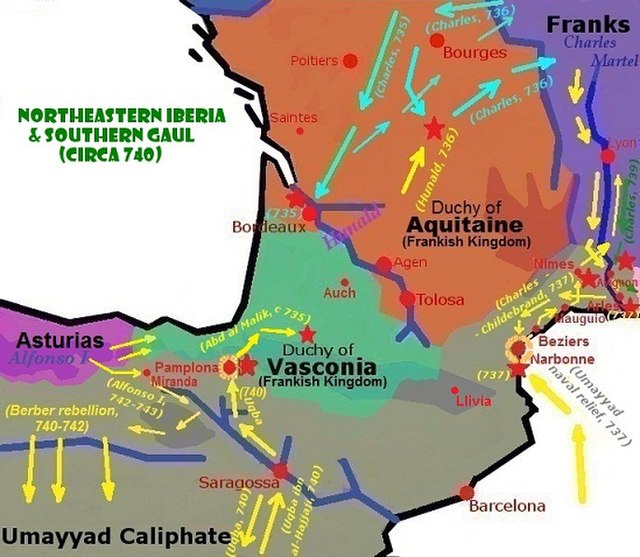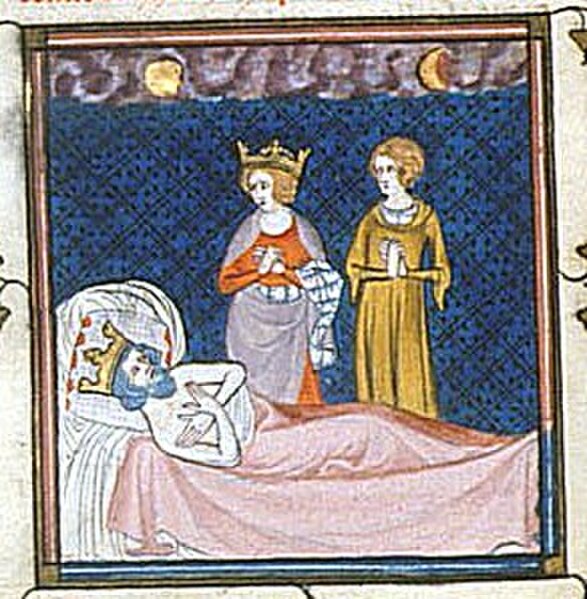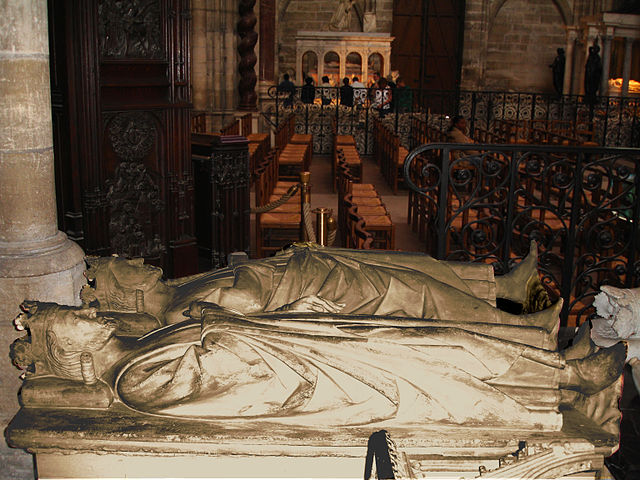Charles Martel, Martel being a sobriquet in Old French for "The Hammer", was a Frankish political and military leader who, as Duke and Prince of the Franks and Mayor of the Palace, was the de facto ruler of the Franks from 718 until his death. He was a son of the Frankish statesman Pepin of Herstal and a noblewoman named Alpaida. Charles successfully asserted his claims to power as successor to his father as the power behind the throne in Frankish politics. Continuing and building on his father's work, he restored centralized government in Francia and began the series of military campaigns that re-established the Franks as the undisputed masters of all Gaul. According to a near-contemporary source, the Liber Historiae Francorum, Charles was "a warrior who was uncommonly ... effective in battle".
1839 sculpture of Charles by Jean Baptiste Joseph De Bay père, located in the Palace of Versailles.
Charles's military campaigns in Aquitaine, Septimania and Provence after the Battle of Tour-Poitiers (734–742)
14th-century depiction of the death of Charles.
Tomb in Saint Denis Basilica.
The Franks were a western European people during the Roman Empire and Early Middle Ages. They began as a Germanic people who lived near the Lower Rhine, on the northern continental frontier of the empire. They subsequently expanded their power and influence during the Middle Ages, until much of the population of western Europe, particularly in and near France, were commonly described as Franks, for example in the context of their joint efforts during the Crusades starting in the 11th century. This expansion came about because the romanized Frankish dynasties based within the collapsing Western Roman Empire first became the rulers of the whole region between the rivers Loire and Rhine, and then subsequently imposed power over many other post-Roman kingdoms both inside and outside the old empire.
Aristocratic Frankish burial items from the Merovingian dynasty
A 19th century depiction of different Franks (AD 400–600)
Detail of the Tabula Peutingeriana, showing Francia at the top
A 6th–7th century necklace of glass and ceramic beads with a central amethyst bead. Similar necklaces have been found in the graves of Frankish women in the Rhineland.








